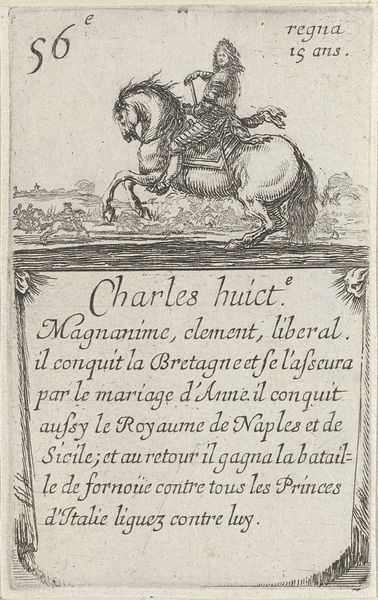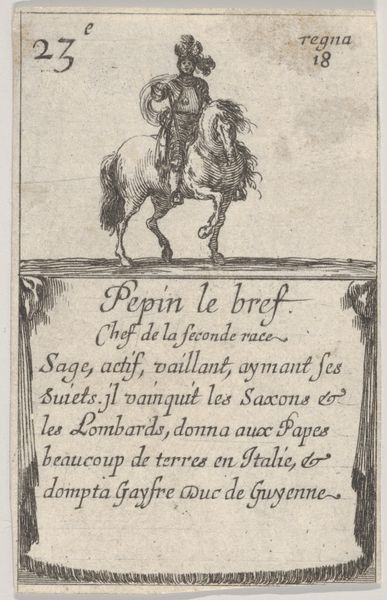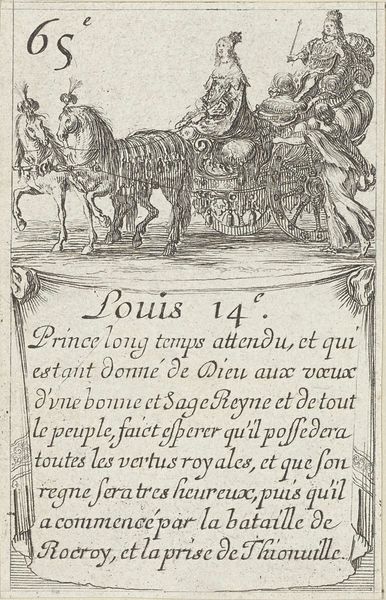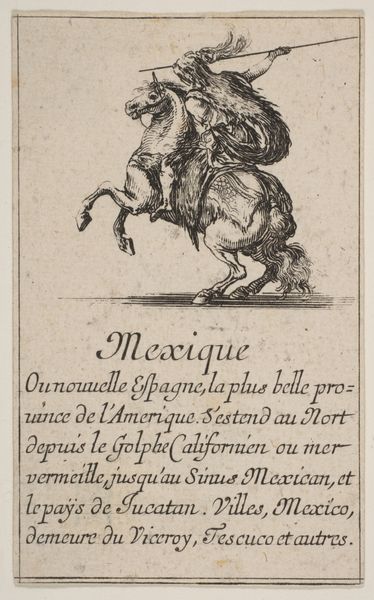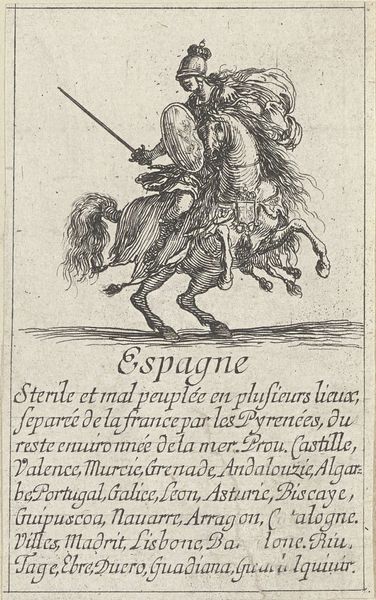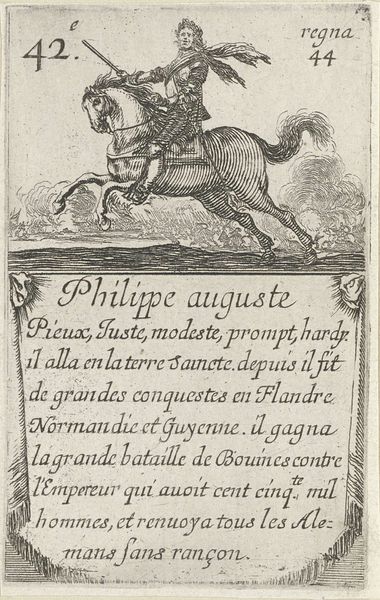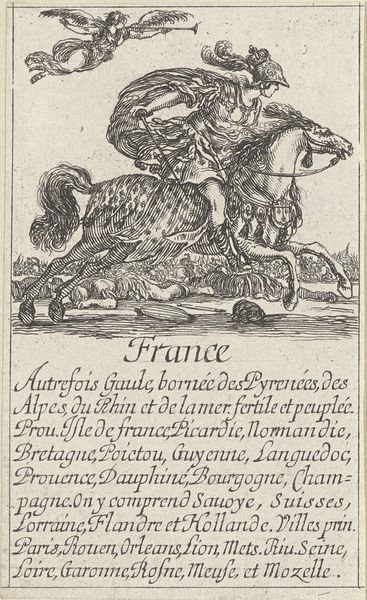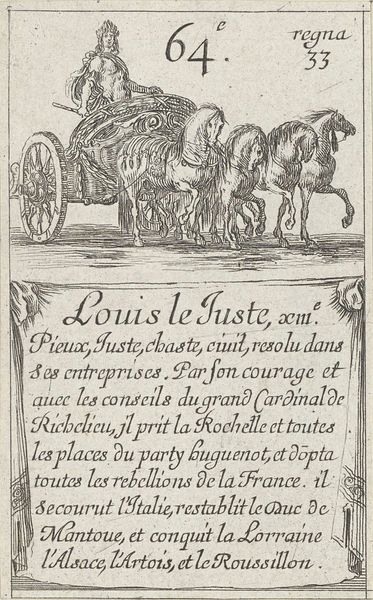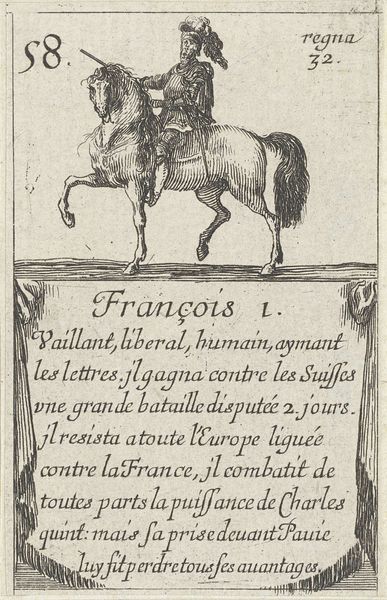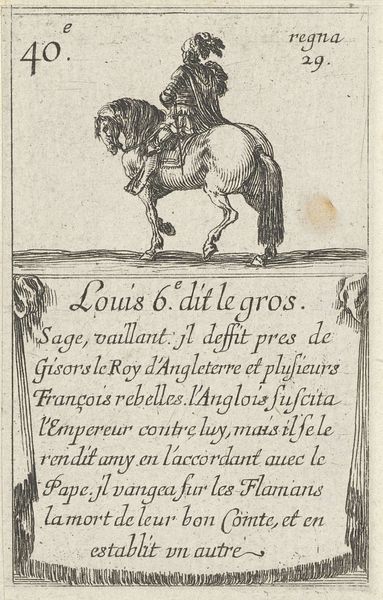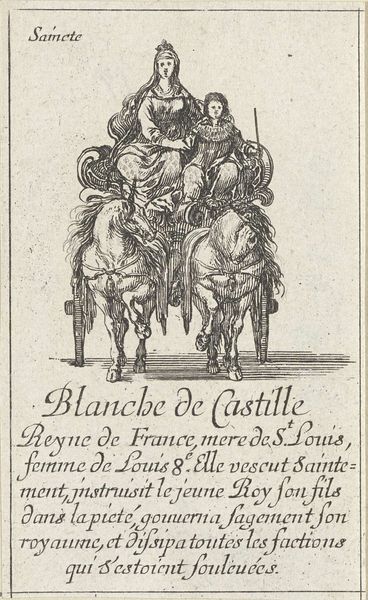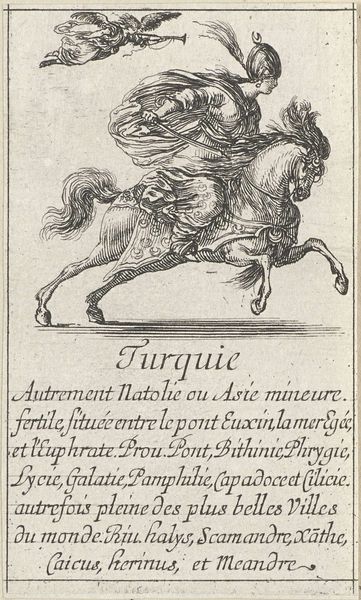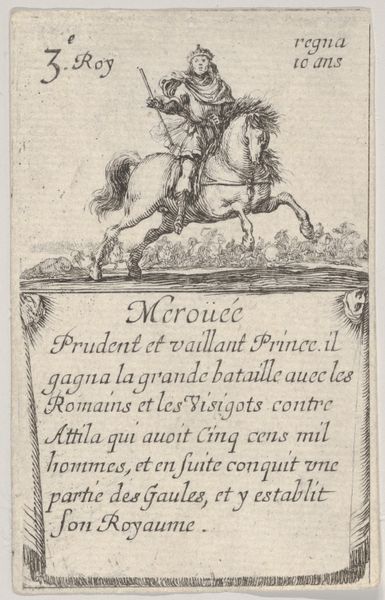
Charles Sept.-e / Prince facile..., from 'Game of the Kings of France' (Jeu des Rois de France) 1644
0:00
0:00
drawing, print, paper, ink, engraving
#
portrait
#
drawing
# print
#
classical-realism
#
paper
#
ink
#
soldier
#
horse
#
genre-painting
#
history-painting
#
engraving
Dimensions: Sheet: 3 7/16 x 2 3/16 in. (8.8 x 5.5 cm)
Copyright: Public Domain
Curator: This artwork, a historical engraving made with ink on paper, is titled "Charles Sept.-e / Prince facile..., from 'Game of the Kings of France'", created by Stefano della Bella in 1644. Editor: My immediate impression is one of action and movement! The horse appears to leap from the frame, carrying the king toward some urgent purpose. Yet the fine, almost delicate lines of the engraving give it a certain refinement, as if celebrating the past from a more reasoned perspective. Curator: Precisely. The 'Game of the Kings of France' was more than just a pastime; it functioned as a potent piece of political messaging during the 17th century. Playing card sets became instruments of power, especially during times of immense conflict. The Fronde, a series of civil wars, shook France around this time. Prints like this circulated imagery that constructed and cemented monarchical authority during periods of challenge and societal upheaval. Editor: Interesting! So it's less about individual likeness and more about embodying an idea? The equestrian portrait certainly presents Charles VII as a heroic figure—almost classical. Look at the horse, reminiscent of the steeds found on ancient Greek friezes. And consider the French text below… Curator: It praises Charles' resilience. Translated, it celebrates the prince as easily agreeable, though a good and resolved figure during times of adversity. Of course, there's a prominent mention of Joan of Arc, "la Pucelle d'Orleans," referencing the historical figure who secured his claim to the throne against the English. It ties into French identity and valor, specifically its reliance on divine will manifested through national heroes and legends. Editor: Yes! And look closer—beyond Joan, even the rearing horse traditionally signifies strength and rulership, echoing symbols of Roman emperors or triumphant generals. But here, in the context of a playing card, it's a readily disseminated symbol—a constant reminder, circulating among society. It's such an ingenius propaganda. Curator: Exactly. A very clear political intent, distributed in this card deck widely throughout the kingdom and beyond. Editor: It really shifts my perception to understand how potent this imagery was—a history lesson and power dynamic captured within the lines of this relatively simple artwork. Curator: A succinct portrayal indeed of how artworks operated as powerful visual narratives and tools.
Comments
No comments
Be the first to comment and join the conversation on the ultimate creative platform.
